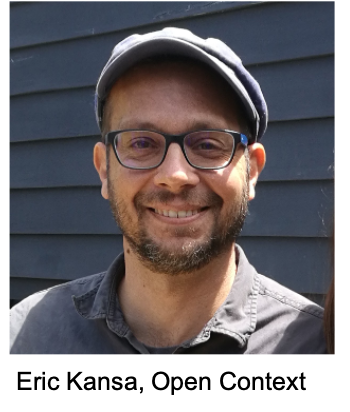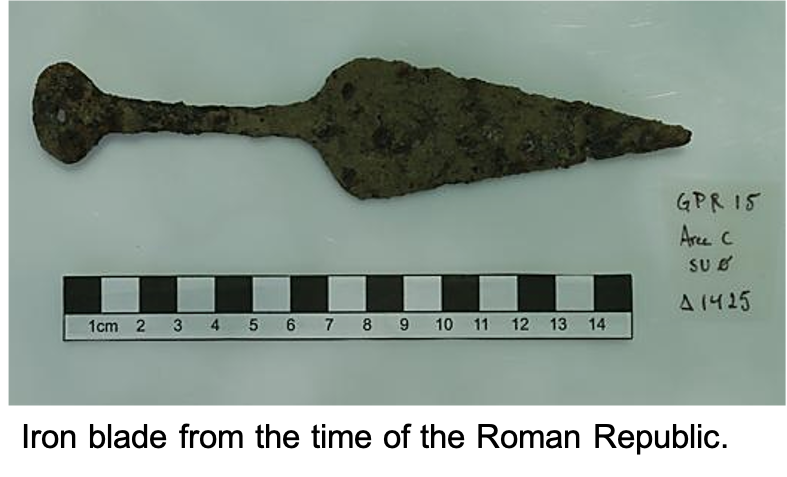‘Internet of Samples’ to use ARKs and IGSNs with physical objects
In August 2020, the US National Science Foundation (NSF) awarded the Lamont-Doherty Earth Observatory of Columbia University and partner institutions $4 million to develop an innovative cyberinfrastructure that will integrate scientific samples into a digital data ecosystem: iSamples, the ‘Internet of Samples.’
Partner institutions include the University of Arizona, University of Kansas, University of California at Berkeley, Open Context (a data system for archaeology), the Smithsonian Institution, and the California Digital Library (CDL). The iSamples ecosystem will support different kinds of persistent identifier, including ARKs and IGSNs for physical objects. CDL’s N2T and EZID systems will provide ARK identifiers for a number of partner collections.
Kerstin Lehnert, Director of Lamont’s Geoinformatics Research Group, is serving as principal investigator. All too often, she says, researchers go to great trouble and expense to collect samples at sea, in polar regions, or in other remote areas, only to have the samples gather dust or even get thrown away after they’ve served their original purpose. Over the next four years, the iSamples project will create a system where researchers across disciplines and throughout the world can share and access metadata on existing samples.
“This will establish an infrastructure that hopefully changes the culture. In many universities and institutions, collections get thrown out. With iSamples they will be [uniformly] registered and their use can be tracked, paving a way to demonstrate the value of these collections,” said Lehnert.
The iSamples project comes at an especially opportune moment. For most of 2020, the COVID-19 pandemic has curtailed fieldwork.
“A lot of researchers and students will have to rely on access to information and data online in the context specifically of the iSamples project. With the COVID restrictions for travel, researchers haven’t been able to go into the field to collect new samples and so access to existing collections has never been more important,” said Lehnert.

In the words of Eric Kansa, Open Context Program Director, “Archaeologists use physical evidence to study the human past, and we rely on collaboration with colleagues in many disciplines. Without detailed provenance and context, including stratigraphy of where artifacts came from, archaeological finds lose most of their scientific and historical value. We need iSamples to more reliably track artifacts from discovery in excavations and surveys, through to laboratory study and museum curation. iSamples may even help in combating the illegal trade of antiquities which, on a huge scale, destroys the historical record by divorcing objects from their contexts.”
“In the evolving collaborative world of museums and collections, iSamples is an exciting endeavor to provide linkages across both domains and institutions to promote better data management, discovery and reuse for material objects and their derivatives,” said Chris Meyer, the lead PI at the Smithsonian. “iSamples will enable expanded connectivity and responsible stewardship moving forward.”
The first two years of the project will largely focus on the design and development of the cyberinfrastructure components, and years three and four will focus on implementing iSamples services at several data systems serving different purposes and communities, including the Lamont-operated System for Earth Sample Registration (SESAR), the Smithsonian Institution natural history collections database, the Genomic Observatories Metadata Database (GEOME), and Open Context’s collections of artifacts, ecofacts (biological remains from archaeological contexts), and archaeological samples. There will be ongoing community engagement throughout the grant to gather feedback from other potential users.
Recent Posts
- Wrapping up 2025 with 1720 ARK organizations 2025-12-15 by The ARK Alliance
- Invest in Open Infrastructure supports LA Referencia and the dARK initiative 2025-12-11 by Lautaro Matas, Katherine Skinner
- ARK documentation changing to show modern ARKs (ark:) by default instead of classic ARKs (ark:/) 2025-07-28 by The ARK Alliance
- Access to open data at the National Library of France using ARK variants 2025-07-23 by Xavier Levoin, John Kunze
- Arklet-frick: bringing ARKs from need to implementation at the Frick Collection 2024-11-10 by Jack O'Malley
- All Posts

